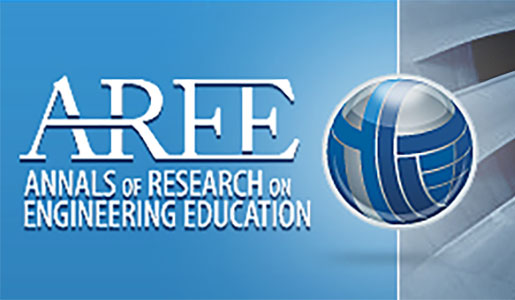Article: A Procedural Problem in Laboratory Teaching: Experiment and Explain, or Vice-Versa?
“Reverse Engineering” of Engineering Education
Pasl A. Jalil
Institute of Academic Development and Training (IADAT) Box # 70319, Khobar 31952, Saudi Arabia
This work emphasized on teaching of the laboratory segment of the first freshman chemistry course, following two different approaches. In Approach I, a traditional approach, each experiment was explained and demonstrated to the students before they participated. The expected results were also discussed. In Approach II, the students started the experiments themselves at the beginning of the laboratory session with minimal help from the instructor. Approach II helps student to be more decision makers while performing the experiments and enables them to select and used the learnt theories in the class in more independent way. Selection and using theories for efficient and effective use is of critical importance in laboratory teaching (1, 2). Also, This could be related to Perry’s model of intellectual development is addressing a very important problem that should be dealt with, according to the author’s opinion, at freshmen level where students are usually dualistic in thinking. i.e. they see the world in dualistic fashion involving the opposites of right-wrong, good-bad, truth is absolute, and uncertainty can only be temporary [3]. This thinking changes with experience to a more complicated, contextual view of reality (relativism) [4]. Unfortunately, most university laboratories provide the opportunity to strengthen the dualist perspectives of students by specifying exactly what data they are supposed to collect to verify the truth that has already been explained and discussed by the instructor [4].
A major research question or issue of this study is related to overcoming some problems that are produced by traditional teaching which leaves no room for hypotheses, trials, errors, or individual responsibility, and preclude the student’s involvement in a decision-making process, which is important in scientific research and intellectual development. All of these factors are vital for engineering education as well as for engineers during their careers.
Approach II could be viewed in different theoretical framework such as guided inquiry approach; where students may design the experiment through teacher-led discussions and certain practical efforts [5-10], active learning [11-16], and problem-solving teaching [17], which all are important methods for intellectual development and enhancing critical thinking among students.
The chemistry department CHEM-101 laboratory manual was used without any changes. The manual consists of explicit instructions enabling students to carry out an experiment after it is explained or demonstrated. All the equipment needed was prepared for students on their lab benches. For each semester there are 12 experiments for the students to conduct. For each semester, and for each section, students started with Approach I, where by 6 (±2) experiments (out of the 12 experiments in the semester) were conducted, then the remaining experiments were conducted using approach II. In essence, all students in each section experienced both approaches throughout the study. A survey was conducted over two years in freshman CHEM-101 lab sessions, a total of 14 sections and 241 students who were taking their first chemistry laboratory. All of them were the author’s students. At the end of each semester the students were asked to fill a questionnaire that consists of four variables that attempt extracting the perceptions of the students towards the following:
(a) understanding the experiment,
(b) enjoyment, in doing the experiment,
(c) achievement, and
(d) difficulty of doing the experiments
While 54% of the students reported increased understanding using Approach II, only 32% reported similarly following Approach I. However, 78% of the students said they felt better about themselves and their achievements using Approach II and 76% claimed they became more self-dependent and conducting experiments alone became routine or almost routine. Also It was found that all students with high quiz grades, more than or equal to the average+1.5 of the standard deviation of the class, preferred to do the experiments first, while only 17% of students with low grades, grades less than or equal the average-1.5 of the standard deviation of the class, preferred this approach.
Results shows that a ‘reverse engineering’ of experiments in different engineering courses will produce engineers who are more creative problem solver, more dependent, and produces engineers who like to be challenged to overcome different design problems.
I would like to thank Institute of Academic Development And Training (IADAT) and King Fahd University of Petroleum and Minerals (KFUPM) for the support of this work.
References
1. Larkin, J. Am. J. Phys. 198149, 534-541.
2. Huddle P.A.; White M.D.; Rogers F. J. Chem. Educ. 2000, 77, 104-110. And the references therein.
3. Finster D.C. J. Chem. Educ. 1989, 66, 659-661. And the references therein.
4. Finster D.C. J. Chem. Educ. 1991, 68, 752-756.
5. Hanson D.; Wolfskill T. J. Chem. Educ. 2000, 77,120-130.
6. Ricci, R. W.; Ditzler, M. A. J. Chem. Educ. 1991, 68, 228-231.
7. Deckert, A. A.; Nestor, L. P.; Dilullo, D. J. Chem. Educ. 1998, 75, 860-863.
8. Crowley, L. A., Proceedings of Frontiers in Education (FIE) Conference. 1998, 1, 379.
9. Palincsar, A. S.; Magnusson, S. J.; Marano, N.; Ford, D.; Danielle, B. N. Teaching and Teacher Education. 1998, 14,5-19.
10. Tien, L. T.; Stacy, A. M. Annual meeting of the American Educational Research Association. 1996, 8-12.
11. Johnson, D. W.; Johnson, R. T.; Smith, K. A. Active Learning: Cooperation in the College Classroom. 1991, Interaction Book Co.: Edina, MN.
12. Robinson W.R. J. Chem. Educ.1997, 74, 622.
13. Nurrenbern S. C.; Robinson WR. J. Chem. Educ.1997, 74 (6) 623.
14. Yager, S.; Johnson, D.; Johnson, R. Journal of Educational Psychology. 1985, 77, 60-66.
15. Reis, J. C. Proceedings-Frontiers in Education Conference,1998, 2, 635-640.
16. Davis W.K.; Nairn R.; Paine M.E.; Anderson R.M.; Oh M.S. Academic Medicine. 1992, 67, 470-4.
17. Gallet, C. J. Chem. Educ. 1998, 75, 72-77.
Author 1: Pasl Jalil [email protected]
Article Link: http://jchemed.chem.wisc.edu/Journal/Issues/2006/Jan/abs159.html

